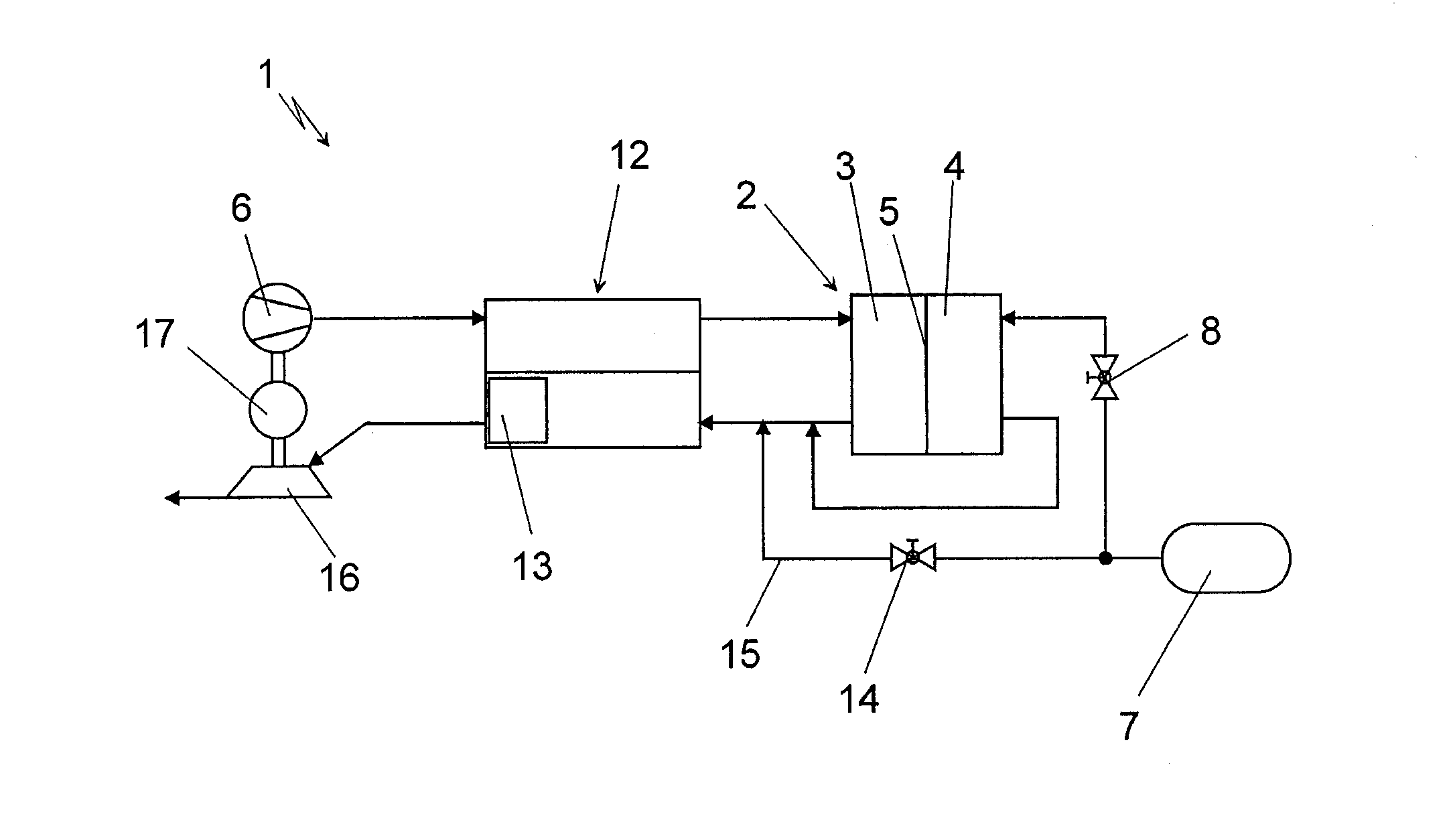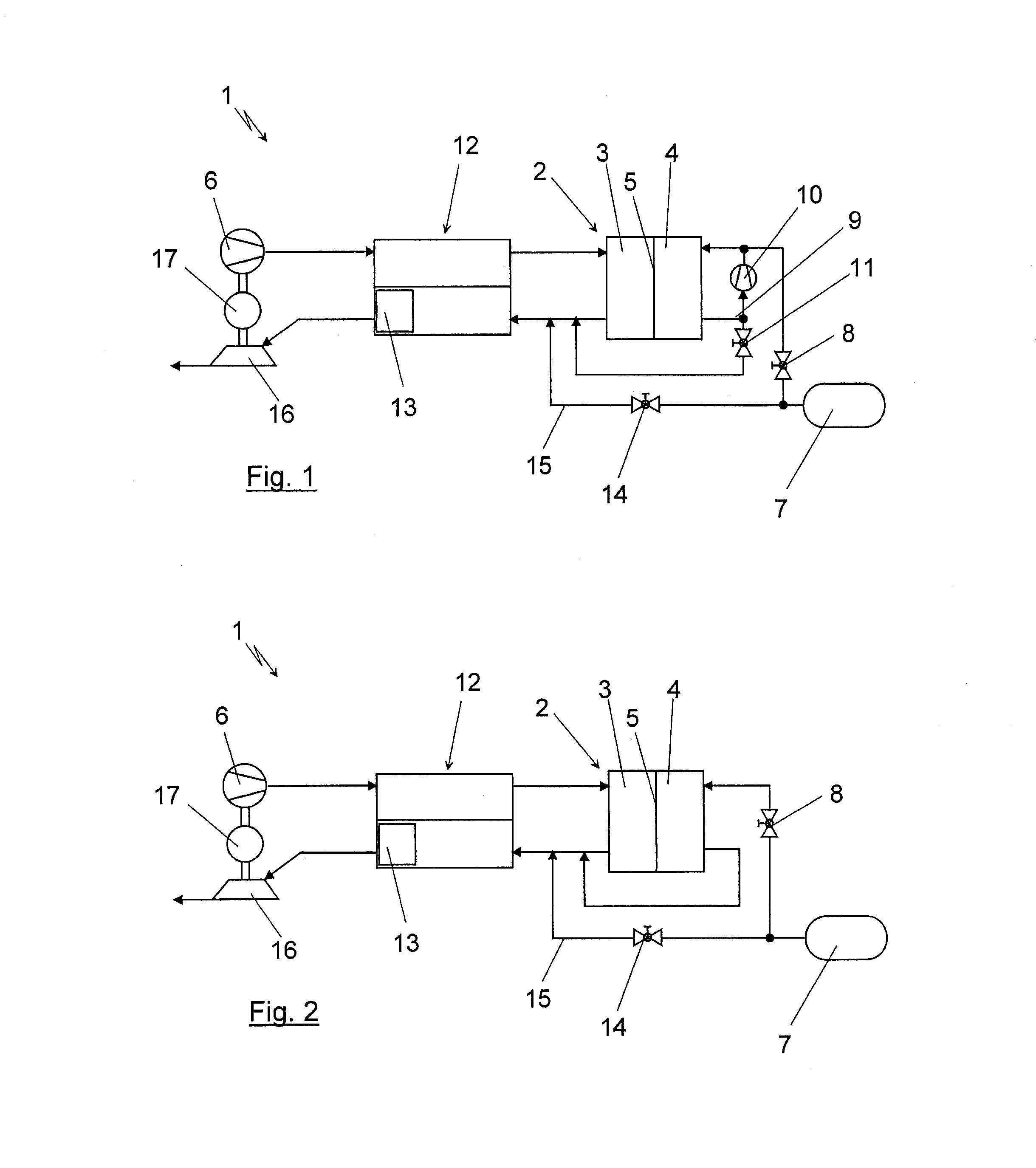Fuel Cell System Comprising at Least One Fuel Cell
- Summary
- Abstract
- Description
- Claims
- Application Information
AI Technical Summary
Benefits of technology
Problems solved by technology
Method used
Image
Examples
Embodiment Construction
[0019]The depiction in the following figures shows only the components necessary for the understanding of the present invention in a highly schematized depiction of the very complex fuel cell system per se. It should thereby be understood for the fuel cell system that further components, as for example a cooling cycle and the like are also provided in the fuel cell system, even though these are not considered in the figures shown in the following.
[0020]FIG. 1 shows a fuel cell system 1 comprising a fuel cell 2. The fuel cell 2 includes a fuel cell 2 constructed of a stack of individual cells in a usual manner. A cathode region 3 and an anode region 4 is formed in the fuel cell 2, which regions are separated from each other by a PE membrane 5 in the exemplary embodiment shown here. In the exemplary embodiment shown in FIG. 1, an intake air flow is supplied to the cathode region 3 via a compressor 6. The compressor 6 can thereby, for example, be designed as a screw compressor or as a ...
PUM
| Property | Measurement | Unit |
|---|---|---|
| structure | aaaaa | aaaaa |
| electrical power | aaaaa | aaaaa |
| energy | aaaaa | aaaaa |
Abstract
Description
Claims
Application Information
 Login to View More
Login to View More - R&D
- Intellectual Property
- Life Sciences
- Materials
- Tech Scout
- Unparalleled Data Quality
- Higher Quality Content
- 60% Fewer Hallucinations
Browse by: Latest US Patents, China's latest patents, Technical Efficacy Thesaurus, Application Domain, Technology Topic, Popular Technical Reports.
© 2025 PatSnap. All rights reserved.Legal|Privacy policy|Modern Slavery Act Transparency Statement|Sitemap|About US| Contact US: help@patsnap.com


